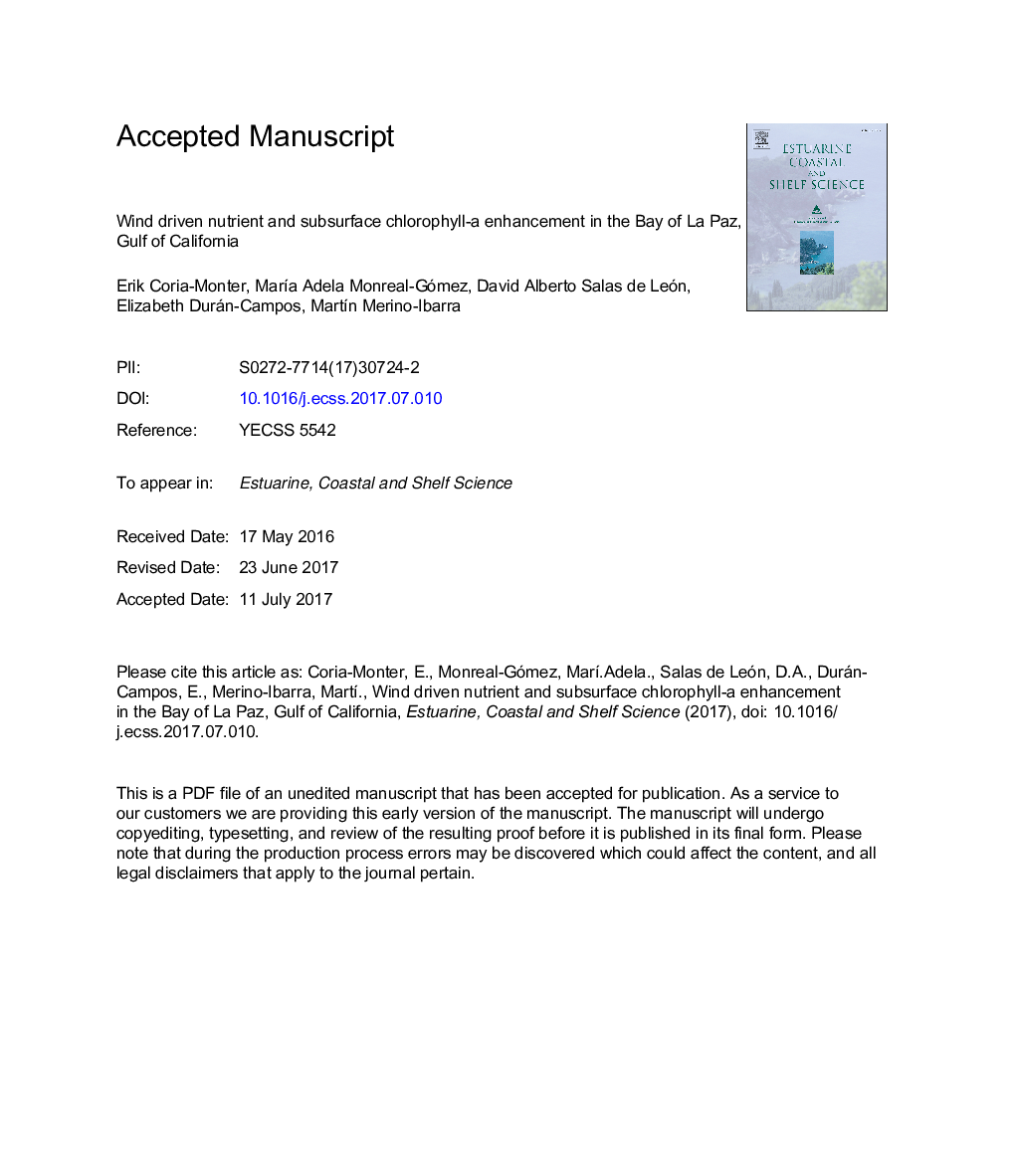| Article ID | Journal | Published Year | Pages | File Type |
|---|---|---|---|---|
| 5765144 | Estuarine, Coastal and Shelf Science | 2017 | 32 Pages |
Abstract
Nutrient and chlorophyll-a distributions in the Bay of La Paz, Gulf of California, Mexico were analyzed during the late spring of 2004 to assess their relations to hydrography and circulation patterns. The results show the presence of both Gulf of California Water and Subtropical Subsurface Water. Water circulation was dominated by wind stress driven cyclonic circulation along f/H contours (f is planetary vorticity and H is depth), and upwelling resulting from the divergence shows a vertical velocity of â¼0.4 m dâ1. Nutrient concentrations were higher in the center of the cyclonic pattern, where a rise in the nutricline contributed nutrients to the euphotic layer as a result of Ekman pumping. The vertical section showed the presence of a chlorophyll-a maximum at the thermocline shoaling to a depth of only 12 m. Along the surface, two peaks of chlorophyll-a were observed, one at Boca Grande and another off San Juan de la Costa, associated with upwelling and mixing derived from current interactions with abrupt topographies. The chlorophyll-a maximum increased from 0.8 mg mâ3 in the external part of the cyclonic pattern to 2.0 mg mâ3 in its center. The vertically integrated chlorophyll-a concentrations followed a similar pattern, rising from 10 to 20 mg mâ2 and reaching their highest values in the center of the cyclonic circulation pattern. A schematic model was developed to describe processes that occur in late spring: the wind stress driven cyclonic structure promotes upward nutrient flux, which in turn drives an enhancement of chlorophyll-a. Upwelling was found to be the main mechanism of fertilization responsible for the enhancement of productivity levels by means of nutrient transport into the euphotic zone during spring. Other chlorophyll enhancement areas point to the occurrence of additional fertilization processes that may derive from interactions between cyclonic circulation patterns and the topography off of San Juan de la Costa, where phosphate mining occurs.
Related Topics
Physical Sciences and Engineering
Earth and Planetary Sciences
Geology
Authors
Erik Coria-Monter, MarÃa Adela Monreal-Gómez, David Alberto Salas de León, Elizabeth Durán-Campos, MartÃn Merino-Ibarra,
